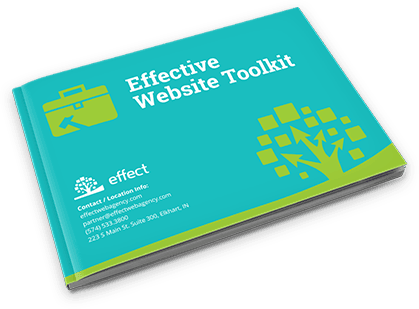Your company’s website represents your brand’s digital storefront, acting as the first impression on consumers. A quality website is crucial for attracting audience attention, engaging users, and gaining conversions. However, in the pursuit of creating visually appealing designs, functionality can often be sidelined, leading to frustrated users and poor results. On the other hand, a purely functional website risks being bland and uninspiring. Balancing creativity and functionality is crucial for effective web design. Let’s take a look at some strategies for maximizing aesthetics and usability!
Why Balancing Creativity and Functionality Matters
A successful website needs to do more than look beautiful. It must also engage users, offer usability, and drive conversions.
Prioritizing one aspect at the expense of the other can lead to common pitfalls that affect the overall quality of your site. For example, overemphasis on creativity can fail to guide users through the site effectively, resulting in frustration and abandonment. Alternatively, a site may work well but lack the visual appeal to hold users’ attention or represent the brand’s personality. Balancing the two allows for a site that engages, delights, and converts.
Designing for User Experience
A user-centered design focuses not only on aesthetics but also on how users can navigate the site. This focus will help you create a site that encourages users to stay and explore.
Know Your Audience
The first step in balancing creativity and functionality is understanding your audience. Who are your users, and what are they looking for? By conducting user research and creating detailed user personas, you gain insight into:
- User behavior and expectations
- Design preferences (minimalist, vibrant, or industry-specific themes)
- Pain points in navigating websites within your niche
When users see a site that feels tailored to their needs, both creativity and functionality will align seamlessly with their expectations.
Map User Journeys
A user journey outlines the steps users take to complete a specified goal on your website, like purchasing a product or filling out a form. Your site’s design and aesthetics should enhance these journeys, making them more intuitive and engaging. Avoid unnecessary distractions or design elements that detract from the user’s path.
Utilize Responsive Design
Responsive design is critical in an era where users access websites on various devices, from desktops to tablets and smartphones. Recent studies show that 92% of internet users primarily access the web using their mobile devices, while 65% use a laptop or desktop computer. Responsive design ensures that your web design comes off the same way on mobile devices and large desktop computers, improving accessibility and reducing bounce rates. When users can easily navigate and interact with your site, regardless of the device, it builds trust and satisfaction.
Intuitive Navigation: Where Design Meets Logic
Navigation is the backbone of functionality in web design. Without it, even the most creative websites fall apart. Use clear, straightforward labels on your menus and navigation items. Grouping content in dropdowns or mega menus can also help users find what they’re looking for faster.
Navigation doesn’t have to be boring. Creative elements like animation, micro-interactions, and visually engaging hover effects can make it both functional and memorable. Ensure these touches don’t disrupt usability and create a frustrating user experience.
Create a Visual Hierarchy
In web design, users don’t consume content sequentially; they scan. Visual hierarchy guides their focus, ensuring they notice key elements. Use large fonts and bold colors for things you want to draw attention to, like headlines or calls-to-action (CTAs). White space can also help users focus on the most important elements while creating an aesthetically pleasing, creative look.
Functional Accessibility
An often overlooked but vital part of web design is accessibility. An accessible website ensures everyone, regardless of ability, can interact with your content. Accessibility can also indirectly impact your site’s rankings in the search engine results pages (SERPs)
Consider these key accessibility features
- Keyboard Navigation: Ensure the website is fully operable without a mouse.
- Readable Fonts: Use legible typography and size for all audiences.
Consistent Branding
A website is a powerful branding tool. When web design elements align with your brand identity, it builds trust and recognition. Use consistent colors, fonts, and imagery that reflect your brand personality. For a creative edge, infuse unique design elements, such as custom illustrations or brand-centric animations. Place branded elements like logos or taglines prominently on your site without overshadowing navigation or content.
Continuous Testing and Iteration
Even with all of these strategies, a website is never truly “done.” Continuous improvement is key to maintaining the balance between creativity and functionality. Regularly update your website and content to adapt to changing brand and user needs.
Balancing creativity and functionality in web design is both an art and a science. By embracing user-centered design, responsive layouts, intuitive navigation, and accessibility, you create a foundation for functionality. Layering creative touches like compelling visual hierarchy, consistent branding, and thoughtful use of white space ensures your site captivates and inspires.
Web design is not a one-size-fits-all endeavor. Each project presents a unique opportunity to harmonize aesthetics with usability, creating a digital experience that resonates with your audience and achieves your goals.
We Can Help!
Effect Web Agency provides web design and marketing services for local, regional, national, and international clients. Contact us to learn how you can improve your online visibility.




